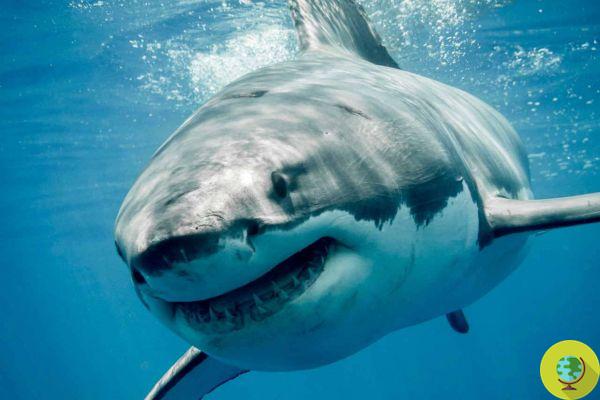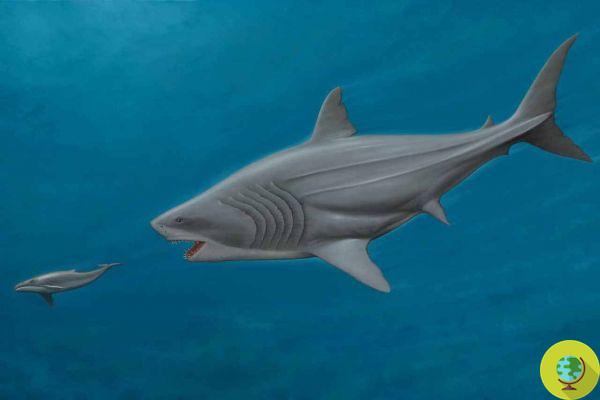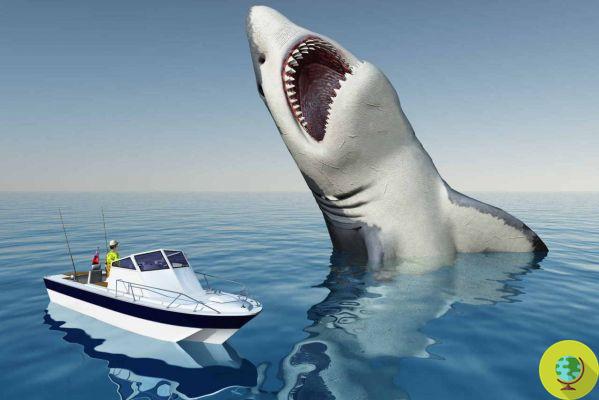The megalodon is not a legend. Extinct about 4 million years ago, it still fascinates. Here is the history, the evolution and many curiosities
He is about to end up run over, his mother saves himIl megalodon it is not a legend: the greatest shark in the world really existed. Extinct about 4 million years ago, it still fascinates. Here is the history, the evolution and many curiosities.
It is not only the largest shark that ever lived, but also one of the largest predators that ever lived, and it continues to capture people's imaginations, making it a living legend. Yes, alive, because the species, even if extinct, really existed. And it was truly extraordinary.
Its name means nothing more than 'big tooth': between 15 and 18 meters in length, three times longer than the largest white shark known, the shark was nicknamed because of the size of its teeth, which can reach 18 centimeters in length.
Among other things, it is from the size of the teeth (almost all the fossil remains of megalodon are teeth) that scientists have traced back to those of the entire skeleton, so far never found complete.
Read also: Discovered the real dimensions of the Megalodon, the largest shark ever lived on Earth
Index
History
As the Natural History Museum explains, the first megalodon fossils (scientific name Otodus megalodon) date back to 20 million years ago. For the next 13 million years the huge shark dominated the oceans until it became extinct just 3,6 million years ago, at the end of the Pliocene, when the planet entered a phase of global cooling. It is not known exactly when the last megalodon died, but new evidence suggests it was at least 3,6 million years ago.
Scientists also believe that up to a third of all large marine animals, including 43% of turtles and 35% of seabirds, went extinct as temperatures cooled and hence the number of organisms at the base of the food chain. fell.
In the case of the megalodon, because adult sharks depended on tropical waters, the drop in ocean temperatures likely resulted in a significant loss of habitat. The species might have adapted to colder waters, but not so many of its prey, including the larger and therefore more nutritious ones.
It is also thought that the megalodon gave birth to her young near the shore. These shallow coastal waters probably served as a perfect nursery for the pups, protecting them from predators that lurked in the open sea. But when ice formed at the poles and sea level dropped, these breeding grounds were perhaps destroyed, contributing to the extinction of the species.
Read also: Exceptional discovery! Newborn megalodons were larger than an adult human
The kinship
“Many reconstructions show the megalodon as a larger version of the large White shark because for a long time it was believed that the species were related - explains Bernard - Now we know that this is not the case, and that the megalodon actually comes from a different lineage of sharks of which he was the last member ".

©ramoncarretero/123rf
The megalodon's oldest definitive ancestor is a 55-million-year-old shark known as Otodus obliquus, which grew to about 10 meters in length. But this shark's evolutionary history is thought to date back to Cretalamna appendiculata, dating back 105 million years, making the megalodon lineage more than 100 million years old.
Indeed, it is possible that the white shark and the megalodon were in competition with each other.
Read also: The great white shark faces extinction (and it's our fault)
Power
Huge teeth, which allowed him to eat even whales, opening his mouth up to a 'maxillary opening estimated at 2,7 by 3,4 meters wide, large enough to swallow two adults side by side.

©Martin Spurny/123rf
“With its large serrated teeth - explains Emma Bernard, who curates the museum's collection of fossil fish (including fossil sharks) - the megalodon ate meat, most likely whales and large fish, as well as other sharks. If you are that big you need to eat a lot of food, so big prey is needed. Its food therefore included animals as small as dolphins and as large as humpback whales ”.
On the other hand, that it also fed on whales is also confirmed by other findings, including fossilized whale bones found with the cutting marks of megalodon teeth engraved on the surface, but also tips of broken teeth, probably during "food frenzies ”Occurred millions of years ago.
Where he lived
The megalodon was one cosmopolitan shark: the species has in fact adapted to warm tropical and subtropical locations around the world, so widespread that its infamous teeth have been found on all continents except Antarctica.
"We can find many of its teeth off the east coast of North America, along the coasts and at the bottom of the creeks and saltwater rivers of North Carolina, South Carolina and Florida - continues the expert - This is probably due in part to the age of the rocks, but also because they can be easily found on the seabed ".
“They are also quite common off the coast of Morocco and parts of Australia. But they can also be found in the UK near Walton-on-the-Naze, Essex ”, although they are still quite rare in the UK.

©Michael Rosskothen/123rf
Could the megalodon still exist?
"No - concludes the scientist - It is definitely not alive in deep oceans […] If an animal as large as a megalodon still lived in the oceans, we would know ”.
In the past there have been in fact some reports of possible sightings, but none of this has ever proved to be concrete and scientifically plausible.
The sharks would indeed leave telltale signs of bites on other large marine animals and their tens of thousands of their huge teeth would continue to litter the ocean floor. Not to mention that, like kind of hot water, the megalodon would not be able to survive in the cold waters of the abyss, where it would have a better chance of going unnoticed.
Sources of reference: Natural History Museum
On the megalodon and other huge fish also read:
-
The coast of Tarragona cradle of megalodons: thus the largest sharks on the planet became extinct
-
The largest fish in the sea is officially female!
-
400-year-old shark found in Greenland - the oldest living vertebrate in the world


























